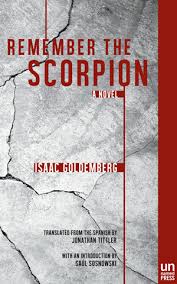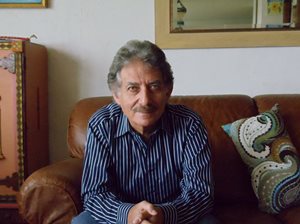A police procedural set in Lima, the one in Peru, in 1970. The protagonist smokes opium and snorts cocaine amid the rubble left by an earthquake. Somewhere the Peruvian socccor team is winning and that alleviates a little of the pain of the destruction for some.

Detective Captain Simòn Weiss is Jewish and makes sure everyone knows it, accompanied by a half-Japanese Lieutenant Kato, like the Green Hornet’s off-sider.
The narcotic haze lifts a little and there are two murders. One isa Japanese crucified on a pool table. The other is the faked suicide of a Jew.
Many shades of World War II haunt Lima. Jews fleeing Naziism found their way to Peru, and after 1945 so did some Nazis fleeing nemesis. Then there are some Japanese war criminals hiding among the local Japanese community, some of whom were deported to camps Stateside, it says in these pages, during WWII. Whew! This plot is thick.
Weiss spends a lot of time worrying about his love life, his mother, his step-father, his mystical dreams about a scorpion, his long-term girlfriend, until he is swept off his feet by a pretty face who promptly dumps him. He is as smitten as the heroine in any bodice ripper at the sight of manly pecs.
Meanwhile, he and Kato tote up a multicultural body count of villains, Japanese and German, and Peruvian or two for good measure.
In part the story is high romance as Weiss meets the girl of his dreams. Remember the opium?
There is no policing to speak of. Everyone knows everyone else and the coppers follow their noses to blast the villains. The formulaic confrontation with kowtowing superiors are only half-hearted.
After slaying the dragons and losing the damsel, Weiss rides off into the sunset leaving Kato to take the credit. That would seem to mean that there will be no future adventures of gunslinger Weiss. West from Peru is a wet ride.
That the hanged man somehow managed to slip a note into the ceiling beam to identify his murders might seem a little far fetched to some.
That Weiss thinks mainly about himself might bore some readers.
That there is little about either Peru in general or Lima particular may disappoint some readers. Though some of the references like to the military school with its yellow walls reminded me of a Mario Vargas Llosa novel, ‘The Time of the Hero.’ Llosa is The Peruvian writer, despite his longtime residence in London, to me. I also read his ‘War at the End of the World’ and found the descriptions of Gaugin’s painting in ‘The Way to Paradise’ to be more compelling than any other of his work I read.
 Isaac Goldemberg
Isaac Goldemberg
The book has a forward in which a friend lauds the genius of the author and an afterward lauding the genius of the translator. Never a good sign when someone else has to try to convince the reader to read the book.
I first encountered this book with its exotic locale in a bookstore in Helsinki Finland in September 2016 and it was only later that I read it on the Kindle.
Skip to content
